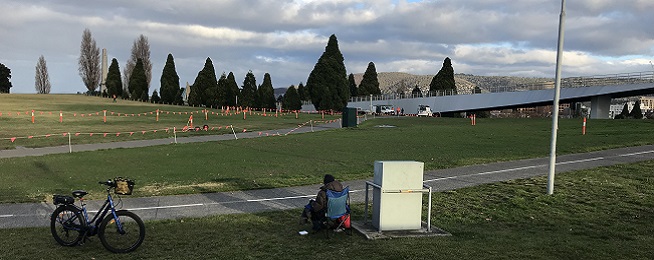Bicycle Network has teemed up with the University of Tasmania and Cycling South to conduct a count of people walking and riding using the new Macquarie Point shared path and Remembrance Bridge.
The count data was collected by some of our Super Tuesday volunteers in two-hour shifts throughout the day from 7 am until 7 pm on Tuesday 4 June.
Two sites were surveyed: the end of the Macquarie Point path at Evans Street and the intersection of the Intercity Cycleway and McVilly Drive.
The Macquarie Point Shared path is yet to be connected to the Intercity Cycleway, although the City of Hobart received federal funding for this project in March this year.
Once a connecting path is built we’d expect more people to travel through the area as long as it’s better riding quality than the current Davey Street route.
Our Super Tuesday count included the Evans Street site for the first time this year. The Macquarie Point shared path had only been open for about one month when the Super Tuesday count occurred.
The count identified 70 riders along the path in the two hours between 7 am and 9 am, while this week’s university count found 54. This week’s count was on a much colder day than the March count, which backs up past counts which show drop-offs in riders numbers on colder days.
This week’s count sought to establish a baseline number for people using the new Macquarie Point shared path and Remembrance Bridge. Subsequent counts can look at whether good quality infrastructure like the bridge and path lead to increases in people choosing to walk or ride.
It will be interesting to count again once the City of Hobart builds the extension from the Intercity Cycleway to the Macquarie Point path and more people become aware of its existence.
The University of Tasmania’s public health project team will look at this week's and future count data as part of the three-year Health by Stealth project.
The project will examine how people travel in Tasmania and why they make those transport choices and identify strategies that aim to increase the adoption of active transport modes.


